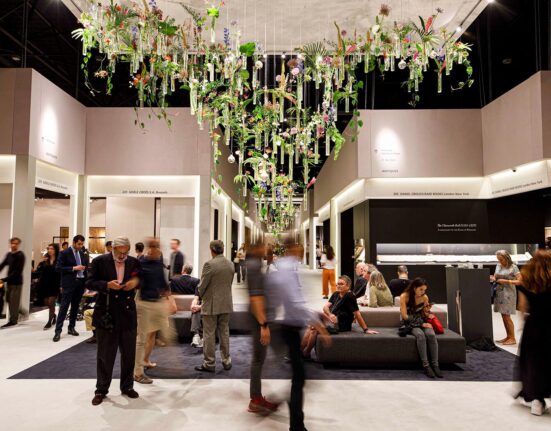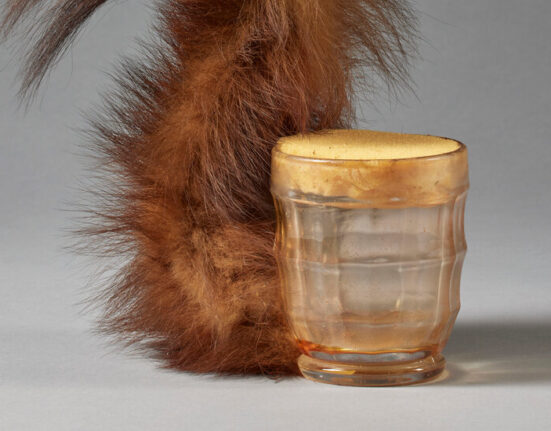Jewelry and crafts from the Muslim world tell the story of one European jewelry house’s fascination with Middle Eastern culture and design in “Cartier: Islamic Inspiration and Modern Design,” on display at the Louvre Abu Dhabi in the United Arab Emirates.
The exhibition, through March 24, is a reimagined version of “Cartier and Islamic Art: In Search of Modernity,” shown at the Musée des Arts Décoratifs in Paris in 2021 and the Dallas Museum of Art in Texas in 2022, which drew heavily from Cartier’s private collection.
The Abu Dhabi exhibition of more than 400 items still includes hundreds of pieces from the Cartier collection, but now also features dozens of items from throughout the Muslim world.
“We have seized the opportunity to explore regional collections,” Fakhera Ahmed Mubarak Alkindi, senior curatorial assistant at the Louvre Abu Dhabi, wrote in an email, “from our own collection to, for example, the Sharjah Museum of Islamic Civilization in the U.A.E., the Museum of Islamic Art in Doha and Al Shindagha Museum in Dubai.”
She noted that the additions include several pieces of Cartier jewelry and artwork from private collections in the region, including the al-Sabah collection from Kuwait and the al-Thani royal collection from Qatar — and that some are on public display for the first time.
Among the items added to the Abu Dhabi show: a tiger’s-eye turban ornament by Cartier from 1937; an elaborate glass vessel in the shape of a mosque lamp; a 16th-century Turkish plate with a saz leaf motif; and a 1927 Cartier vanity case inspired by Turkish ceramics and made of gold, platinum, enamel and gems such as sapphires and emeralds.
The exhibition continues to explore Cartier’s fascination with the region.
Louis Cartier, born in 1875 and a grandson of the company founder, amassed a huge collection of Islamic art. And in 1911, his brother Jacques traveled to the Gulf region and to India to learn more about pearls and precious stones, creating drawings that inspired numerous Cartier designs.
“Islamic art has played a significant and structural impact on Cartier’s creative language since the beginning of the 20th century,” Pierre Rainero, international image, style and heritage director at Cartier, said in a news release for the revised exhibition. “Cartier’s true pioneering spirit is also revealed, along with the role the maison played in the birth of modernity.”
Curators preparing the reimagined show found several instances of Islamic influence on the Paris house’s creations.
For example, Évelyne Possémé, former chief curator of ancient and modern jewelry at the Musée des Arts Décoratifs, wrote in an email that while Jeanne Toussaint was Cartier’s hugely influential director of fine jewelry, “we discovered that one of the sources of inspiration was the flowers of Iznik ceramics, reproduced in gemstones in her jewelry from the 1940s and 1950s.”
“The result is a true immersion into the creative process,” she wrote, “and a journey through the sources that inspired some of the most innovative pieces in French jewelry.”







